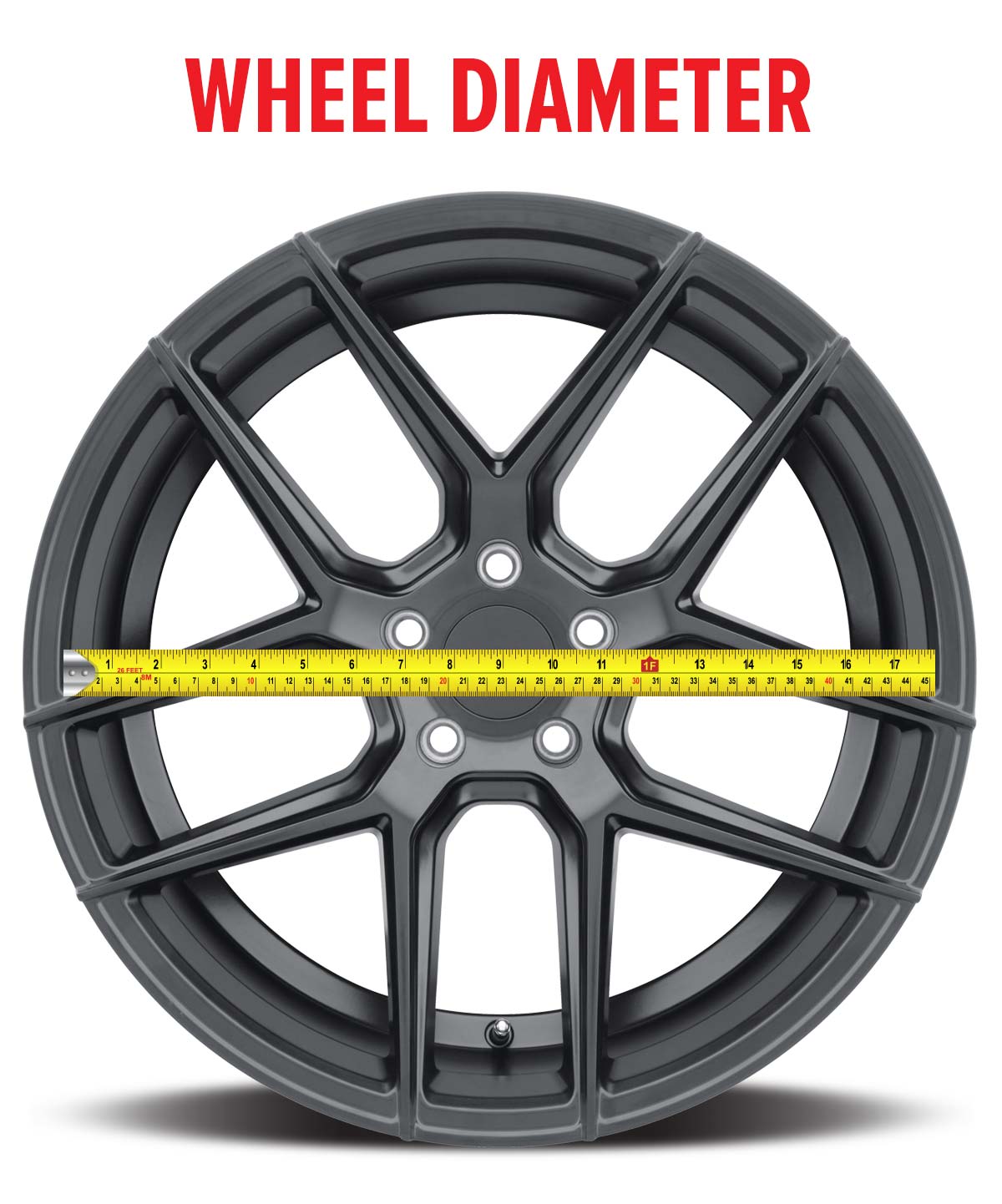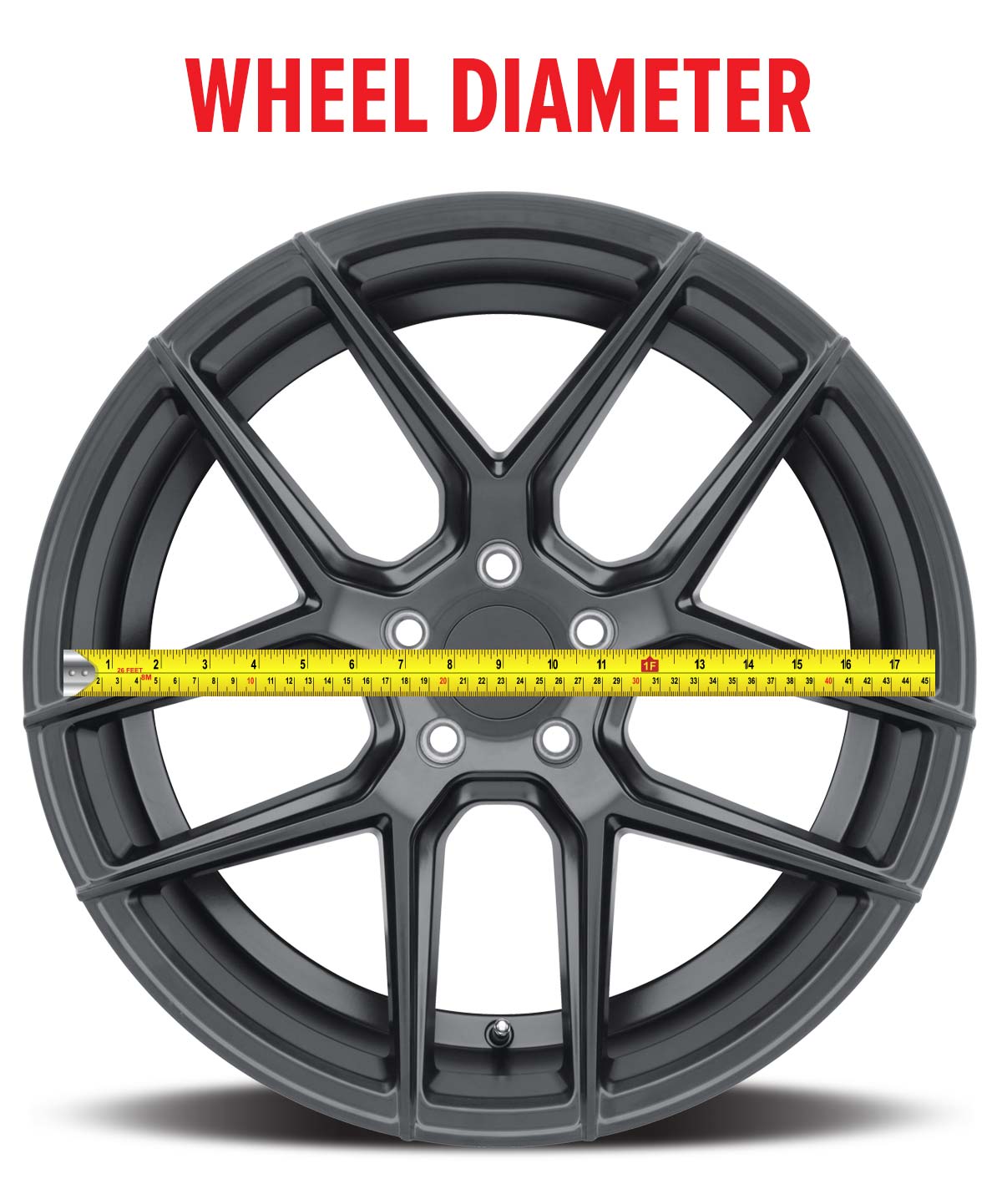As car enthusiasts, it’s important to have a good understanding of the technical aspects of our vehicles. One area that often gets overlooked is the measurement of car wheels. Properly measuring your car’s wheels can help you determine the right tire size, ensure proper fitment, and improve overall performance.
But where do you start when it comes to measuring car wheels? In this guide, we’ll break down the steps you need to take to accurately measure your car’s wheels, including the tools you’ll need and the key measurements to keep in mind. Whether you’re a seasoned mechanic or just starting out, this guide will provide you with the knowledge you need to confidently measure your car’s wheels and make informed decisions about your vehicle’s performance.
- First, remove the wheel from the car and place it on a flat surface.
- Next, measure the diameter of the wheel by placing a measuring tape from one end of the wheel to the other, passing through the center.
- Then, measure the width of the wheel by placing a measuring tape across the wheel’s surface from one edge to the other.
- Finally, measure the bolt pattern by counting the number of bolts and measuring the distance between them.

H2: How to Measure Car Wheels: A Comprehensive Guide
Car wheels are an essential component of your vehicle. It is essential to ensure that they are in good condition to keep your car running smoothly. However, measuring car wheels can be a daunting task for many car owners. In this article, we will guide you through the process of measuring car wheels.
H3: Understanding Wheel Size
The first step in measuring car wheels is to understand wheel size. Wheel size is usually indicated on the tire sidewall. It consists of three numbers, for example, 205/55/R16. The first number (205) indicates the width of the tire in millimeters. The second number (55) indicates the aspect ratio, which is the height of the sidewall as a percentage of the width. The third number (16) indicates the diameter of the wheel in inches.
To measure the wheel size, you need to measure the diameter of the wheel from one end to the other. You can do this by placing a tape measure across the center of the wheel.
H3: Measuring Bolt Patterns
The next step is to measure the bolt pattern. The bolt pattern refers to the number of bolts on the wheel and the distance between them. To measure the bolt pattern, you need to measure the diameter of the bolt circle. This is the imaginary circle that passes through the center of the bolts. You can do this by measuring the distance between the center of two adjacent bolts.
Once you know the bolt circle diameter, you can count the number of bolts on the wheel. The bolt pattern is usually expressed as the number of bolts followed by the diameter of the bolt circle. For example, a 5×114.3 bolt pattern means that the wheel has five bolts, and the bolt circle diameter is 114.3 millimeters.
H3: Determining Wheel Offset
Wheel offset refers to the distance between the hub mounting surface and the centerline of the wheel. It is an essential measurement because it determines the position of the wheel relative to the fender. There are three types of wheel offset: zero offset, positive offset, and negative offset.
To determine the wheel offset, you need to measure the distance between the hub mounting surface and the rim’s centerline. You can do this by placing a straight edge across the rim’s back and measuring the distance between the straight edge and the hub mounting surface.
H3: Measuring Wheel Backspacing
Wheel backspacing refers to the distance between the back of the wheel and the hub mounting surface. It is an essential measurement because it determines how much clearance there is between the wheel and the suspension components.
To measure wheel backspacing, you need to place a straight edge across the back of the wheel and measure the distance between the straight edge and the hub mounting surface.
H3: Measuring Wheel Width
Wheel width refers to the distance between the inside and outside edges of the wheel. It is an essential measurement because it determines the size of the tire that can be mounted on the wheel.
To measure wheel width, place a straight edge across the wheel’s widest point and measure the distance between the inside and outside edges of the wheel.
H3: Benefits of Measuring Car Wheels
Measuring your car wheels is essential for several reasons. First, it ensures that you buy the right size of tires for your car. Second, it helps you select the right type of wheels for your car, depending on your driving style and needs. Third, it helps you maintain your car’s performance and safety.
H3: Wheel Measurement Vs. Wheel Fitment
Wheel measurement and wheel fitment are two different things. Wheel measurement refers to the size and dimensions of the wheel. Wheel fitment refers to how the wheel fits on your car. It takes into account factors such as bolt pattern, offset, and backspacing.
H3: Tips for Measuring Car Wheels
Here are some tips to help you measure your car wheels accurately:
1. Use a tape measure that is long enough to measure the diameter of the wheel accurately.
2. Measure the wheel size, bolt pattern, offset, backspacing, and width from several different points to ensure accuracy.
3. Use a straight edge to measure wheel backspacing and width.
4. Consult your car owner’s manual if you are unsure of the correct wheel size.
H3: Conclusion
Measuring your car wheels is an essential task that ensures your car’s safety and performance. By following the steps outlined in this article, you can measure your car wheels accurately and select the right size and type of wheels for your car. Remember to consult your car owner’s manual and use the right tools for accurate measurements.
Contents
Key Takeaways: How to Measure Car Wheels?
- Measuring your car wheels is an important step in ensuring the safety and efficiency of your vehicle.
- The first step in measuring your car wheels is to determine the correct wheel size, which can be found on the tire itself.
- You will need to measure the diameter of the wheel, the width of the wheel, and the bolt pattern to ensure proper fitment.
- When measuring the diameter of the wheel, it is important to measure from the bead seat to bead seat, rather than the overall diameter of the tire.
- The width of the wheel should be measured from the inside of the lip to the inside of the opposite lip.
- The bolt pattern is measured by determining the number of bolts and the distance between them in millimeters.
- It is important to use a reliable measuring tool, such as a digital caliper or tape measure, to ensure accuracy in your measurements.
- Once you have determined the correct measurements, you can select the appropriate replacement wheels or tires for your vehicle.
- Regularly measuring your car wheels can also help you detect any abnormal wear or damage, which can indicate the need for maintenance or repairs.
In conclusion, measuring your car wheels is a simple but essential task that can help ensure the safety and longevity of your vehicle. By following the steps outlined above and using the proper measuring tools, you can accurately measure your car wheels and make informed decisions when selecting replacement wheels or tires.
How To Measure Your Wheels (Diameter, Width, Offset, and Backspacing)
In today’s world, cars have become an essential part of our lives, and it is vital to maintain them regularly to ensure their efficiency and longevity. One of the critical aspects of maintaining a car is measuring its wheels. Measuring car wheels may seem like a daunting task, but it is an integral part of keeping your car running smoothly. By following the steps outlined in this guide, you can easily measure your car wheels and ensure that your car is running at its optimal level.
In conclusion, measuring car wheels is crucial for maintaining your car’s performance and increasing its longevity. By following the steps outlined in this guide, you can easily measure your car wheels and identify any issues that may be hindering your car’s performance. Remember to measure your car wheels regularly and seek professional help if necessary to ensure that your car is running at its optimal level. With proper maintenance, your car can continue to provide you with a smooth, safe, and enjoyable driving experience for many years to come.

